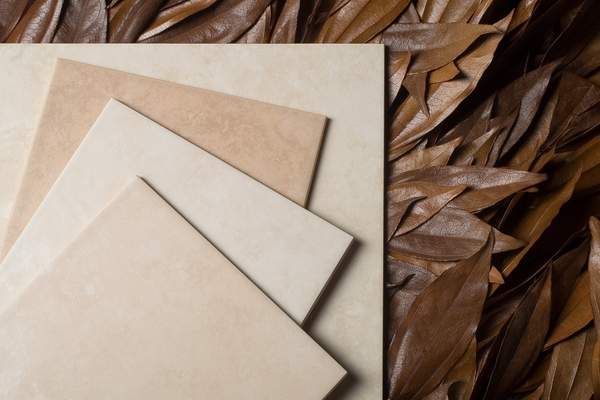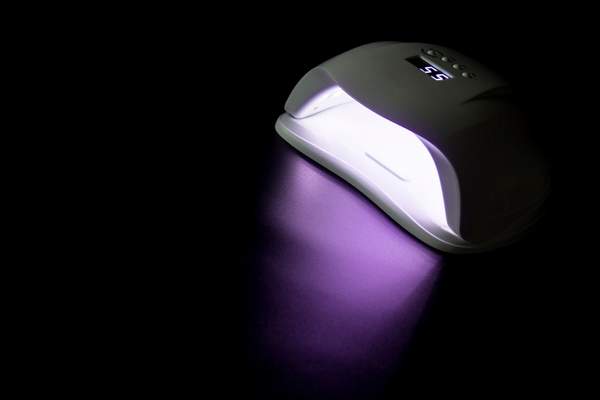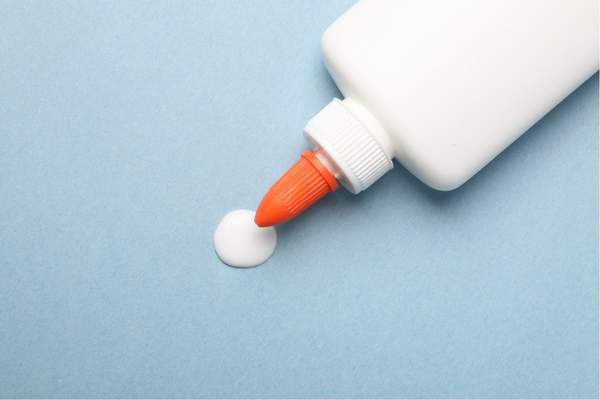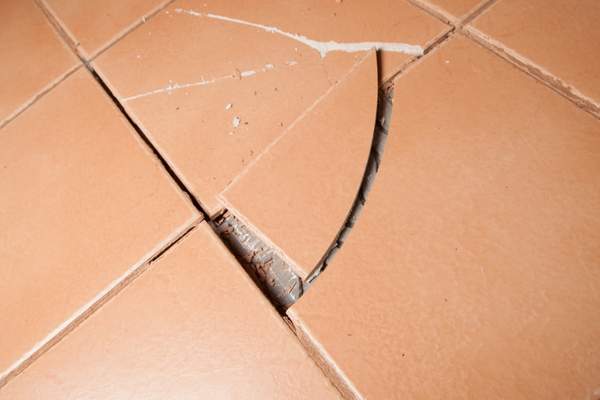Although ceramic tile flooring is durable, it also depends on the installation process and maintenance.
Choosing a suitable adhesive for sticking ceramic tile will ensure stronger bonding. Since there is a wide range of glue, epoxy, and cement, finding the right adhesive might be an overwhelming task.
No more worries if you have difficulty choosing the best adhesive to bond ceramic tile. You have found the right place!
In this blog, we have listed the seven best types of glue that you can use to stick ceramic tiles.
Some ceramic tile adhesives include epoxy, construction adhesive, super glue, silicon adhesive, UV-cured glue, urethane and polyurethane adhesives, and contact cement.
Anyway, each of these products has its own pros and cons.
Ceramic Tile

This is one of the most popular tiles used in many houses. You can use ceramic tiles for the floor, wall, backsplash, worktop, and bathroom.
Clay, sand, quartz, and water are the raw materials used in ceramic tile production. Investing in ceramic tile flooring will ensure durability, as proper installation lasts around 100 years.
Compared to porcelain tile, ceramic tiles are cheaper as they are made from low-temperature kiln-fired and less refined clay.
Many people intend to purchase this tile because it is affordable and long-lasting.
Why does Ceramic Tile Need a Strong Adhesive?

Using regular glue or adhesive will not work for bonding ceramic tiles. Having a stock of the right adhesives will help to fix any damages.
Imagine you are trying to bond a broken ceramic tile to the surface.
Since these tiles are heavy, choosing a stronger adhesive will strengthen the bonding. Hence, you don’t have to spend on frequent repairs.
If choosing a suitable adhesive is a complex process, the following are some of the best adhesives you can use to bond ceramic tiles.
7 Best Adhesives To Stick Ceramic Tiles

Epoxy
You must mix the epoxy tile motor before application, as these are two or three separate components.
The two-part epoxy is durable and strong. Hence, it is one of the best adhesives for bonding ceramic tiles. As this glue is long-lasting, you can use it in high-traffic areas.
| Pros | Cons |
| Extremely durable and strong High compressive strength Adhere to various surfaces, including ceramic tiles Suitable for damp surfaces (waterproof) | Messy application process Time-consuming Expensive Installation requires a higher temperature Extremely strong smell |
Note: You can use an old toothbrush or toothpick to apply epoxy. Accidentally, if you spill the glue on top of the ceramic tile then wait patiently till it hardens. Using the razor blade, you can scrape it off.
Construction Adhesive

Construction adhesive’s thick, syrupy consistency works well on a porous surface like ceramic tiles. It might be hard to find a heavy-duty construction adhesive.
Since this adhesive forms a strong bond with the surface, it will not break over time. This is an ideal cement-backed board, drywall, or wood product.
| Pros | Cons |
| Weather resistance Resistant to water damage Suitable for both indoors and outdoors Suitable for various surfaces Highly durable | Has a low melting point (not suitable for high temperatures) Less flexible Messy |
Super Glue

A must-have product in all households is super glue. Most DIY projects include superglue when bonding something.
Yes, you can use this glue to bond ceramic tiles. Suppose a piece of tile is broken. Then you can stick it using super glue.
Even though superglues are not ideal for large projects, you can use them for minor repairs.
| Pros | Cons |
| Instant solution Easy installation Flexible Suitable for various surfaces | Not waterproof Not heat-resistance Frequent replacement required |
Necessary: Apply superglue to the surface and let it sit for around 30 seconds before you bond the ceramic tile. If the bonding is weak, you can supply heat using a hair dryer. This will help to strongly bond the tiles.
Silicone Adhesive
Silicone adhesive is capable of handling moisture and temperature. High-flexibility adhesives ensure the bonding is strong and long-lasting.
Also, you use this glue on both porous and non-porous surfaces. Hence, this will work well for bonding ceramic tiles.
Silicone caulk adhesive is available in most households, as many use it for sealing cracks.
| Pros | Cons |
| Extremely flexible Water-resistant (prevents the growth of mold and mildew) After application, clean it using soap and water No chemical curing involved | It might not be suitable for some surfaces Not durable as the other adhesive. Costly |
UV Cured Glues

The UV-cured glue uses a photochemical reaction to cure. By shining UV light on this glue, you can dry it. UV-cured glue is another ideal adhesive for sticking ceramic tiles, as it works well on non-porous surfaces.
| Pros | Cons |
| Highly durable Extremely strong When you use UV-light, the curing time is quick Waterproof Heat-resistant and chemical-resistant | It is necessary to use an ultraviolet curing machine or lamp to dry the adhesive. Not suitable for DIY tasks |
Urethane or Polyurethane Adhesives
This adhesive will be a great choice if this is your first time trying to repair or install the tile.
Working with urethane or polyurethane adhesive is convenient and ideal for DIYers. Urethane adhesive helps bond ceramic tiles firmly to the surface.
You can use a brush or roller when applying this glue.
| Pros | Cons |
| Suitable for both dry and wet surfaces Waterproof Easy to apply Resistant to temperature changes | When compared to epoxy, this adhesive is less strong It might require frequent replacement. |
Contact Cement
Another adhesive you can use to stick ceramic tiles to different surfaces is contact cement. This glue cures faster.
Hence, it will help save time. It will strongly bond to the ceramic tiles and not break down over time.
| Pros | Cons |
| Durable (the bonding last for years) Easy application Cured contact cement is waterproof | Over time, contact cement may become brittle. Therefore not suitable for high moisture environments. |
Important: Apply a thin layer of contact cement on the ceramic tile and the surface. Before bonding, let it stay until the cement turns tacky, and then you can stick the tile to the surface.
Alternative Options for Sticking Ceramic Tiles

Suppose you don’t have any adhesives mentioned above; you are not lost. Still, there are more alternatives that you can use to stick ceramic tiles.
Liquid Nails Adhesive
The Liquid Nails adhesive is an excellent option for bonding ceramic tiles. This adhesive will work well in different environments, including high humidity and extreme temperatures.
Follow the guidelines in the user instruction manual when using this adhesive. Also, it is essential to wear safety gear when necessary.
Gorilla Glue
Gorilla glue is best when working in a wet environment. This adhesive will help ceramic tile stick to the surface. Gorilla glue provides instant bonding and an airtight seal. Since this glue is manufactured explicitly for ceramic tile, it will provide strong bonding.
Repairing Ceramic Tiles with Adhesives

When using DIY projects, you can use super, gorilla, and many other adhesives to stick ceramic tiles. If you are involved in a small project like fixing a broken tile, you can do it using super glue.
First, ensure to clean the surface and the tile well. A debris-free surface will make the adhesive more effective.
Then apply a thin layer of superglue to the surface and back of your ceramic tile piece. Hold it for around 30 seconds before bonding them together.
Bottom Line
Now, you might have an understanding of the best types of adhesive that you can use to stick ceramic tiles.
When working with ceramic tiles, you must ensure that the adhesive you select works well on non-porous surfaces.
As this blog has all the necessary information about ceramic tile adhesives, including the pros and cons, it is up to you to decide which product will work best for your project.
When deciding on a suitable glue, you must check the environment you will be working in, the surface type, and many other factors.
Suppose you are trying to remove the old ceramic tiles and install new ones then you can check our recent blog on “How To Remove Ceramic Tile Adhesive From A Concrete Floor?”. This blog will be helpful to create a smooth surface before retiling.
We hope this article helped you!
FAQs
Can I Use Wood Glue to Stick Ceramic Tiles?
Yes, you can use wood glue on ceramic tiles.
Most professionals do not recommend using wood glue because, over time, this can damage the tile.
Is Ceramic Tiling Eco-friendly?
Yes, ceramic tiles are eco-friendly.
Since the manufacturer uses natural raw materials to make ceramic tile, these tiles will not harm the environment.
Where Should I Install Ceramic Tiles?
You can install it on the countertop, wall, floor, backsplash, or many other areas of your house.
Is Ceramic Tile Waterproof?
No, ceramic tiles are not fully waterproof.
Can I Stick Ceramic Tile Using Hot Glue?
No, hot melt glues are not suitable for sticking ceramic tiles. This is because the bonding will be very weak and less durable.
Are Ceramic Tiles Good For Walls?
Yes, you can use ceramic tiles for wall tiling.
